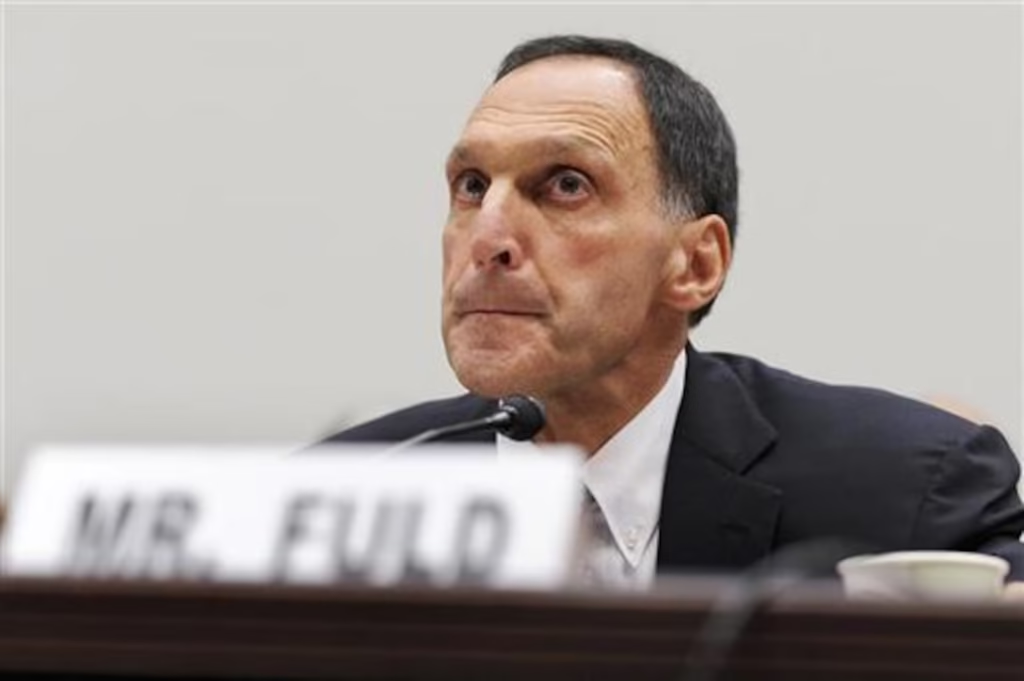In the annals of finance, few net worth figures are as narratively charged as Richard Fuld’s $250 million. It is not a number that exists in a vacuum; it is a monument to one of the most spectacular corporate collapses in history and a testament to a relentless, if controversial, capacity for survival. To understand the composition of Fuld’s fortune today is to trace a trajectory from the vertiginous peaks of Wall Street power, through a catastrophic fall that vaporized nearly a billion dollars in personal wealth, and into a stubborn, gritty resurgence in the shadows of the market he once commanded. This is not merely a story of wealth, but a story of what remains after the deluge.
The Ascent: Building an Empire on Leverage (Pre-2008)
Before the cataclysm of 2008, Richard “Dick” Fuld wasn’t just wealthy; he was a titan. As the long-standing CEO of Lehman Brothers, he presided over a vast global investment bank. His personal net worth was inextricably linked to the firm’s performance and stock price.
At its zenith, Fuld’s wealth was estimated to be well over $1 billion. The vast majority of this was not in liquid cash but in Lehman Brothers stock and related compensation. He was famously a believer in his own company, holding onto his shares with a conviction that bordered on the zealous. This was the core of his asset base—a colossal, highly leveraged bet on the continued success of the firm he had helped build. His compensation packages were legendary, totaling hundreds of millions of dollars in the years leading up to the crisis, comprising stock
His lifestyle reflected this empire-building status. He owned a lavish apartment in Manhattan’s prestigious One Beacon Court, a multi-million dollar estate in Greenwich, Connecticut, a vacation home in Sun Valley, Idaho, and an impressive art collection. His net worth was a classic example of pre-crisis Wall Street wealth: concentrated, opulent, and built on the fragile foundation of debt and confidence.

The Fall: The $1 Billion Evaporation
The autumn of 2008 serves as the great cleaver in the story of Richard Fuld’s net worth. As Lehman Brothers’ reckless bets on the subprime mortgage market began to sour, the firm’s value plummeted. Fuld, refusing to believe the firm was insolvent, resisted drastic measures until it was too late. The government refused a bailout, and on September 15, 2008, Lehman Brothers filed for Chapter 11 bankruptcy.
The evaporation of wealth was instantaneous and historic. Lehman’s stock became worthless, wiping out the primary asset that constituted Fuld’s fortune. Overnight, a net worth measured in ten figures was decimated. The man once nicknamed “The Gorilla” for his pugnaciousness on the trading floor was left with the shattered remnants of his empire.
The subsequent years were filled with liquidations and legal battles. To cover debts and legal fees, Fuld was forced to sell off personal assets. His art collection, including works by renowned artists, was auctioned for millions. His sprawling Greenwich mansion was sold. While he had undoubtedly taken hundreds of millions off the table during his heyday, a significant portion of his liquid wealth was consumed by the aftermath. He became the poster child for Wall Street greed and failure, summoned before Congress to answer for the
This is where the current figure of $250 million becomes fascinating. It is not the result of a quiet retirement fund. It is the product of a phoenix-like, and to many, controversial, comeback. This recomposed fortune is built on a completely different foundation than his previous one.
Shadow Capital” of Matrix Partners:
Following the Lehman collapse, Fuld did not retire. He retreated. In 2009, he established Matrix Advisors, a small, discreet advisory and consulting firm. This was the vehicle for his return. The firm, later renamed Matrix Partners LP (no relation to the venture capital firm), operates in the opaque world of private debt and distressed assets.
This is the core of his modern wealth. Fuld and his firm specialize in providing advice and capital to mid-sized companies that are struggling to secure financing from traditional banks—the very kind of banks Lehman once was. He essentially built a business out of the ashes of the crisis he helped create, leveraging his extensive, albeit tarnished, network to broker deals. The profitability of this venture is private, but industry reports suggest it has been highly successful, quietly generating tens of millions in fees and returns over the past decade and forming the bedrock of his current $250 million valuation.
Strategic Investments and Deal-Making:
Matrix Partners acts as a merchant bank, investing its own capital in these distressed situations. Fuld has been involved in deals ranging from energy to real estate. His strategy is to use his knowledge of high-risk, complex financial situations to identify value where others see only peril. This ability to navigate chaos, honed during the Lehman downfall, is now his primary business asset.
Despite the fire sales, it is believed Fuld had protected certain assets. Not all his wealth was tied to Lehman’s stock. Through trusts, earlier investments, and perhaps assets held in his wife’s name, a financial base remained intact. This reservoir of capital provided the seed money for Matrix and allowed him to maintain a very high-end lifestyle, albeit less public than before. He still owns significant real estate, including a multi-million dollar home in
The Philosophy of a Recomposed Fortune
Richard Fuld’s net worth today is a story of resilience, adaptation, and the harsh mechanics of the American financial system. His $250 million is a fortune built on the ashes of a far larger one. It is less a symbol of power and more a testament to survival.
Unlike Vincent Viola’s fortune, built on the steady, algorithmic harvesting of micro-spreads, Fuld’s wealth is cyclical


